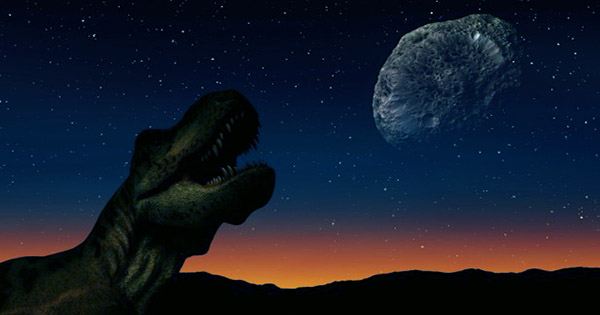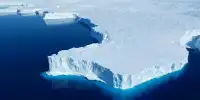A million 66 million years ago, an asteroid about 17 kilometers (10.6 miles) wide hit the Earth, releasing billions of tons of sulfur into the atmosphere, and spells cool consequences for 75 percent of the planet’s life – including non-avian dinosaurs. New simulations of huge effects, however, suggest that these dinosaurs had really bad luck, since in a shallow or raised corner; the asteroid did not completely crash into the party of the dinosaurs.
Dr. Gareth Collins, of Imperial College London, UK, and lead author of the research published in Nature Communications, said in a statement, “For dinosaurs, the worst-case scenario is what happened.” “The asteroid strike released an incredible amount of climate-changing gases into the atmosphere, creating a series of events that led to the extinction of dinosaurs. It was probably made worse by hitting at the deadliest corner. “
International researchers have discovered that the site of the asteroid impact in Mexico, the 200-kilometer (124-mile) wide Chicxulub crater, was probably formed by a steep trajectory, a space rock, from horizontal 45 to 60 degrees, coming from the northeast.
It releases porous carbonates and evaporating rocks from the near-symmetrical distribution of matter and releases more effective amounts of climate-changing gases than other affected experiments. It was the release of large amounts of carbon dioxide, sulfur, and water vapor that blocked the sun’s rays – inhibiting the photosynthesis of plants, cooling the climate rapidly, and ultimately contributing to mass extinction.
Collins continued, “Our simulations provide strong evidence that the asteroid hit a steep angle was probably 60 degrees above the horizon and reached its target from the northeast.” “We know it was one of the worst situations to have a catastrophic impact because it threw more dangerous debris into the upper atmosphere and spread it everywhere – that’s what caused the nuclear cold.”
In a combination of these 3D simulations, which perfectly modeled the event from the beginning (effects) to the final (final cat formation), Mexico used geophysical data from the site. Drill samples from recent studies showed evidence of extreme impact balls and the size of the hooves and the satellite informed the angle and direction of the potential impact.
Co-author Dr. Auriol Rae of the University Of Freiburg, Germany said in a statement, “Despite being buried at the bottom of the resort rock for about a kilometer, it is noteworthy that the geological data reveals so much about the crater structure – it is enough to describe the direction
Indeed, the alignment of the crater center, the center of the sphere (a ring of mountains made of heavy broken rock inside the rim of the crater), and the center of the mantle rocks rising 30 kilometers (18.6 miles) deep, was a key piece of evidence supporting the simulation results from the 60-degree asteroid trajectory.
Creating a map of the continuous movement of craters has not only helped the team understand this dinosaur-dooming effect, but may also help others in their research on other planets, even giant daggers.
Imperial College London co-author, Thomas Davison explained, “Larger craters like the Chicxulub are formed in a matter of minutes and involve the spectacular return of the rock beneath this hole,” co-author Dr. Thomas Davison, of Imperial College London, also explained. “Our research could help us understand how this rebound could be used to determine the details of the affected asteroid.”
















